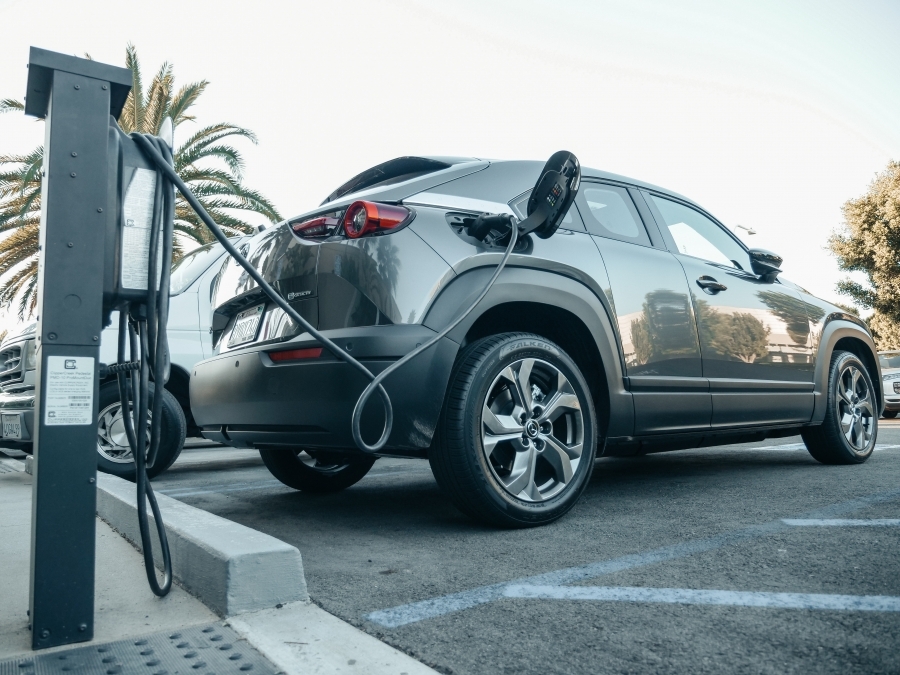Robert Vinelli, President of FECAICA, emphasized that: "Central America's electricity matrix is changing. On a global scale, there is talk that in less than 10 years cars will be electric. And he raised the question of whether the countries of the region have the capacity to be prepared. Finally, he invited us to explore each of the alternatives and decisions and to look to the future: price, supply and stability are very important aspects of electricity supply.
The event was divided into two colloquiums and both were moderated by engineer Nanik Singh, representative of FECAICA's regional energy committee, who said that "electric mobility is more than electric cars and we have to see it as an opportunity to achieve healthier cities, more jobs and energy independence". He also added that in Central and Latin America we must establish as goals to eliminate fossil fuel consumption to focus on energy independence that moves us away from the issue of buried assets.
Institutional promotion
Arturo Alarcón, energy specialist at the Inter-American Development Bank (IDB), participated in the first colloquium and shared the opportunity that countries have to achieve environmental commitments to reduce emissions through the decarbonization of transportation and the mix of electricity generation with renewable resources. He also said that they support the countries of the region to overcome the barriers they may present to implement electric mobility. From the perspective of the IDB's energy division, this is seen as something integral, including private and public transportation.
Jone Orbea, Leader of MOVE, the electric mobility platform in Latin America and the Caribbean, cited the exemplary case of electromobility in Central America, which categorically corresponds to Costa Rica, where she highlights the willingness of the different actors of society involved in making it a reality.
He also mentioned the technical support being provided to energy entities in Guatemala, El Salvador and Honduras to generate their national electromobility strategies.
Jone commented that in the region, the MOVE program provides technical assistance to countries to decarbonize the transportation sector and support the transition to electromobility. To this end, they carry out regular activities to disseminate knowledge through virtual sessions.
Regional benchmarks and how other countries in the isthmus can move forward
The second part of the event consisted of learning what the Dominican Republic and Costa Rica are doing to achieve substantial progress in this area, sharing experiences and lessons learned that could be useful for other countries in the region.
Four guests, representing different institutions related to electromobility, participated in the event:
Randall Zúñiga, Director of Energy, in Ministry of Environment and Energy of Costa Rica.
Silvia Rojas Soto, Executive Director of the Asociación Costarricense de Movilidad Eléctrica (ASOMOVE).
Charles Sánchez, President of the Asociación de Movilidad Eléctrica Dominicana (ASOMOEDO
Juan Carlos Botrán, President of the Asociación de Movilidad Eléctrica en Guatemala (AMEGUA).
Costa Rica already has a law and four regulations in force on electric mobility. Randall Zúñiga commented on how the country promotes this type of mobility:
"The possibility of buying electric vehicles was achieved by reducing taxes at the time of nationalizing them upon entry into the country. Beyond that, encouraging the use of vehicles through certain attractions outside the financial part, such as exclusive parking for these vehicles, reducing the tax burdens that year after year must be paid in the country. This encourages the fact that a person can opt for non-fiscal benefits, such as the use of electric chargers in exclusive areas, a badge that in this case is a distinctive color plate, which shows that the person is using an electric vehicle".
He also mentioned that in Costa Rica the idea was clear that the country wanted to make an energy transition, starting with automobiles used in the public sector and what is being promoted with the issue of public transportation with electric trains and cabs.
Silvia Rojas said that the success of the energy transition in Costa Rica is due to an intersectoral effort, so she encourages the rest of the countries in the region to adopt this vision. She also commented that economic incentives and environmental awareness are two aspects that have led to greater acceptance of electric vehicle technology among the Costa Rican population. And given the opportunity they have identified, they are in the process of bringing to the legislative plenary reforms to the law to create incentives for the importation of second-use electric vehicles, which will increase the possibilities for citizens.
In the case of the Dominican Republic, Charles Sanchez mentioned that the country has made spectacular progress. One of the main advantages of Law 103-13 is the fifty percent reduction in the payment of taxes for each electric vehicle imported into the country. This has made it possible to equalize in price the purchase of a new internal combustion vehicle versus one with electric technology.
He said that more than 3,000 electric or hybrid vehicles have entered the country. One of its strengths is the wide nationwide coverage of 400 charging points and types of chargers available for the users of these vehicles. This makes it possible for a citizen to travel all over the country.
It was mentioned that there are still limitations on the sale of energy for charging stations and it is still necessary to think about how to handle an increase in the demand for these services. There are already countries with optimal regulations to face this situation, so it is necessary for governments to make these arrangements and new vehicle purchase schemes.
Juan Carlos concluded that it is crucial for Guatemala and other countries in the region to have a regulatory framework that encourages the use of electric vehicles. As the evidence presented by Costa Rica and the Dominican Republic shows, this is the way to start and continue with the development of the electromobility ecosystem in each country.
 English
English  Español
Español 
